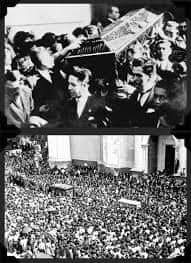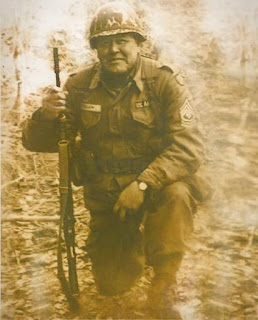SAINT OF THE DAY (November 23): BL. MIGUEL PRO(1891-1927), priest and martyr.
SAINT OF THE DAY (November 23): BL. MIGUEL PRO(1891-1927), priest and martyr.
José Ramón Miguel Agustín Pro Juárez, also known as Blessed Miguel Pro, SJ was a Mexican Jesuit priest executed under the presidency of Plutarco Elías Calles on the false charges of bombing and attempted assassination of former Mexican President Álvaro Obregón.
Miguel Pro was born into a mining family on January 13, 1891, in Guadalupe, Zacatecas. He was the third of eleven children, four of whom had died as infants or young children. From a young age, he was called "Cocol" as a nickname. Two of his sisters joined a convent. He entered the Jesuit novitiate at El Llano on August 15, 1911.
One of his companions, Pulido, said that he "had never seen such an exquisite wit, never coarse, always sparkling. He was noted for his charity and ability to speak about spiritual subjects without boring his audience." Pulido remarked that there were two Pros: the playful Pro and the prayerful Pro. He was known for the long periods he spent in the chapel.
Long-time President of Mexico Porfirio Díaz was ousted in 1911 after staging a rigged reelection, and a struggle for power – the Mexican Revolution – began.
Pro studied in Mexico until 1914 when a massive wave of governmental anti-Catholicism forced the novitiate to dissolve and the Jesuits to flee to Los Gatos, California, in the United States. He then went to study in Granada, Spain (1915–19), and from 1919 to 1922 taught in Nicaragua.
For his theological studies Pro was sent to Enghien, Belgium, where the French Jesuits (also in exile) had their faculty of Theology. His health continued to deteriorate. There he was ordained a priest on August 31, 1925.
His first assignment as a priest was to work with the miners of Charleroi, Belgium. Despite the socialist, communist, and anarchisttendencies of the workers, he was able to win them over and preach the Gospel to them.
In summer 1926 – his studies in Europe completed – Pro returned to Mexico.
Pro arrived at Veracruz on July 8, 1926. Plutarco Elías Calles, anti-Catholic, was now president of Mexico. Unlike his predecessors, Calles vigorously enforced the anti-Catholic provisions of the 1917 constitution, implementing the so-called Calles Law, which provided specific penalties for priests who criticized the government (five years' imprisonment) or wore clerical garb in certain situations outside their churches (500 pesos). This law went into effect on July 31, 1926.
Details of Pro's ministry in the underground church come from his many letters, signed with the nickname Cocol. In October 1926, a warrant for his arrest was issued. He was arrested and released from prison the next day, but kept under surveillance.
A failed attempt to assassinate former president Álvaro Obregón in November 1927, provided the state with a pretext for arresting Pro again, this time with his brothers Humberto and Roberto. A young engineer who confessed his part in the attempted assassination testified that the Pro brothers were not involved. Miguel and his brothers were taken to the Detective Inspector's Office in Mexico City.
On November 23, 1927, Pro was executed without trial. President Calles gave orders to have Pro executed for the assassination attempt. Calles had the execution meticulously photographed, and the newspapers throughout the country carried photos on the front page the following day. Presumably, Calles thought that the sight of the pictures would frighten the Cristero rebels who were fighting against his troops, particularly in the state of Jalisco. However, they had the opposite effect.
President Calles is reported to have looked down upon a throng of 40,000 which lined Pro's funeral procession. Another 20,000 waited at the cemetery where he was buried without a priest present, his father saying the final words. The Cristeros became more animated and fought with renewed enthusiasm, many of them carrying the newspaper photo of Pro before the firing squad.
Pro was beatified in Saint Peter's Square, Rome on September 25, 1988, by Pope John Paul II.
















Comments
Post a Comment